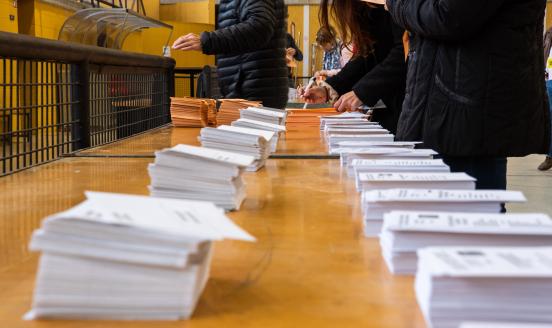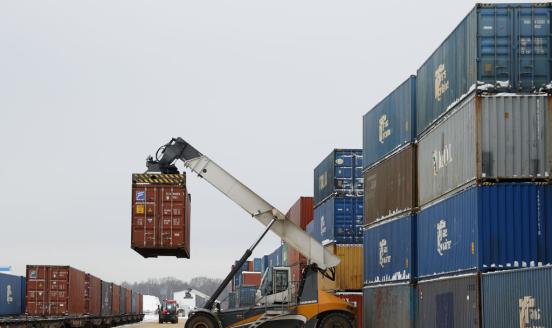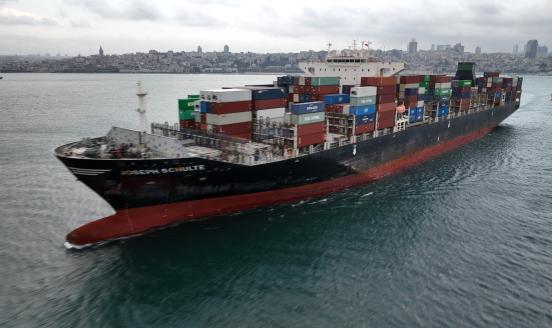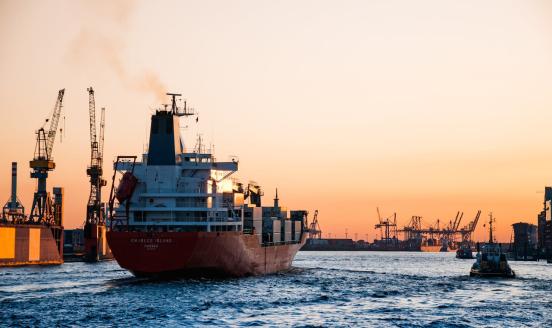The decoupling of Russia: high-tech goods and components
Sanctions on high-tech goods supplies, combined with financial sanctions and other restrictions, will deprive Russia of a future as a modern economy.
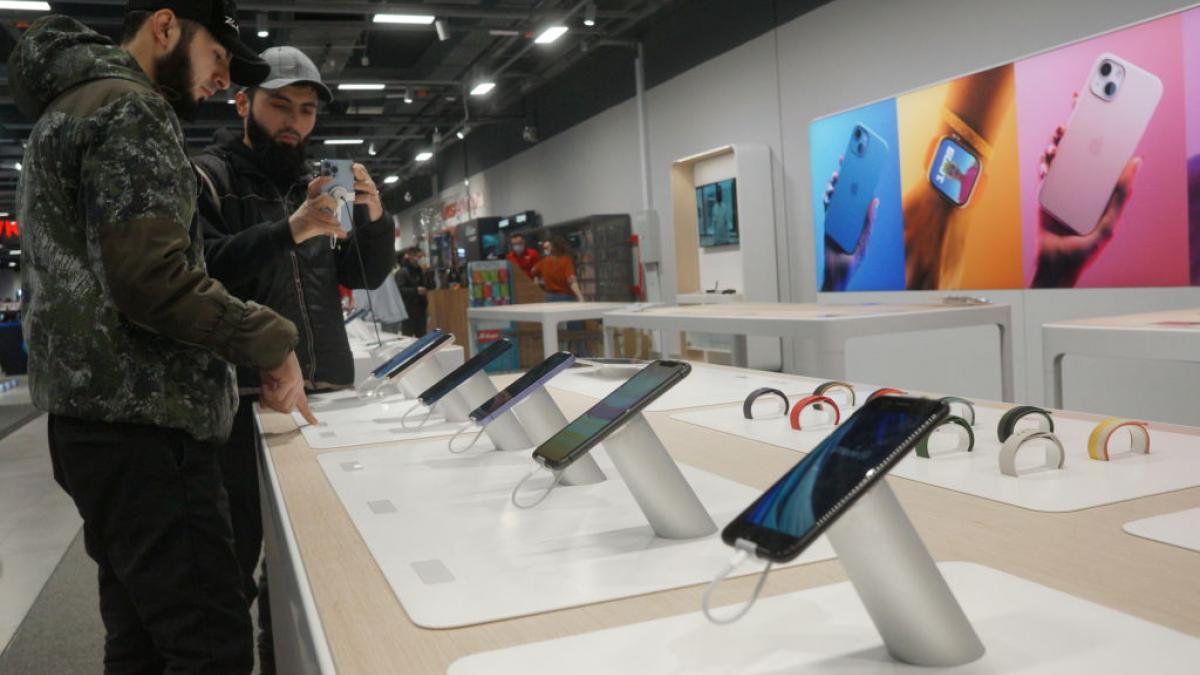
Targeted sanctions on specific technologies, financial sanctions and ‘self-sanctioning’ by private companies are effectively decoupling Russia from supplies of high-tech goods. The combination of technological and financial sanctions, public pressure and reputational risk, and the collapse of the Russian economy has made the decision to leave the Russian market easy for companies, and not just those from NATO-allied countries.
Russia has tried to resist technological sanctions by import substitution, but without success. High-tech products are developed using inputs from many countries, but few of them can function without inputs from the European Union or the United States. As a result, a single economy cannot replicate the capabilities of the global network.
In some high-tech goods industries, the effect of sanctions is already being felt. In the long term, sanctions will also severely affect Russia’s growth outlook and ensure that waging war means Russia will cease to be a modern economy. Highly skilled Russians are already leaving, reinforcing the effect of the sanctions.
Restrictions will need to take into account humanitarian obligations to the Russian public as well as the pragmatic benefits of ensuring that the flow of information to the Russian public continues (see our companion article on Russia on software, cloud services and disconnection from the global internet). Policymakers should consider how to preserve Russia’s access to information and medical goods, while applying pressure on technology in general.
Russia’s dependency on Western high tech
Russia is highly reliant on imports of high-tech goods, with imports worth around $19 billion annually. The largest share (45%) comes from the EU, with 21% from the US, 11% from China and 2% from the United Kingdom. The main import categories are aerospace goods (worth almost $6 billion) and information and communication goods (nearly $4 billion in 2019).
Most nuclear technology imports in 2019 came from the EU (68%). The EU is also the main provider of biotechnology, electronics, life sciences and flexible manufacturing goods (Figure 1). China was the primary provider of opto-electronics, and the US was the main supplier of aerospace goods to Russia.
The EU is the biggest supplier to Russia of aerospace, biotechnology and life science goods, which collectively constitute more than half of Russian imports of high-tech goods from the EU (Figure 2). The US exports mostly military helicopters, airplanes and turbojet aircraft engines, totalling more than $3 billion. One-third of UK high-tech exports to Russia are aerospace goods worth $140 million.
Sanctions
To limit Russia’s access to high-tech goods, NATO-aligned countries have imposed trade restrictions. Some target specific companies, while others target whole sectors and goods categories. The restrictions cover dual-use goods, which can support defence and military efforts, and strategic goods, which develop key sectors of the economy. In the sanctions put in place since 2014 by the EU and the US, restrictions on strategic goods focused mostly on equipment relevant to the development of the Russian energy sector.
Since Russia’s invasion of Ukraine, the US has significantly broadened the scope of its export restrictions to Russia with wide-ranging export licence requirements for products made using US-origin ‘software, technology or equipment’, irrespective of where the goods have been produced. The scope of US sanctions has been broadened to cover most goods sectors except for food, medical goods, certain internet-based software for personal communications and energy.
Extraterritorial US sanctions are supplemented by sanctions from other NATO-aligned countries and by high-tech firms abandoning Russia. The EU has expanded its own export restrictions to include a number of advanced technologies and dual-use goods. The United Kingdom, Japan, Canada and Taiwan have imposed export bans on dual-use goods and sensitive high-tech goods.
Export restrictions complement other sanctions on Russia. The extensive financial sanctions, which significantly hamper the transfer of funds to and from Russia, limit options for Russia to pay for its imports. These financial sanctions have reinforced supply-chain disruptions, including decisions by major shipping firms to suspend services to Russia, insurance companies raising premiums for shipping, and shipping routes exposed to the conflict. These disruptions are deterrents to conducting any trade with Russia. In fact, these barriers also pose a challenge to trade in essential and non-sanctioned goods, including shipments of medical goods. The deterioration in the value of the ruble is another reason for foreign firms to throttle back their Russian business operations. Chips, aviation and medical goods stand out as specifically important, or subject to specific measures.
Chips
Semiconductors are the brains of high-tech products and crucial to the curtailment of Russian economic and military capacities. Their growing importance for Russia is reflected by imports almost doubling between 2007 and 2020 (Figure 3). Russia relies on chip imports. In attempts to shield the economy from sanctions, the state has tried to support homegrown semiconductor companies, but without success. Domestic manufacturing capacities remain very limited and Russia does not produce any high-end semiconductors.
The US first imposed a curb on such imports through the restriction of trade of technologies made with US-origin software. These types of restrictions have an extraterritorial reach – if a semiconductor is produced in Taiwan using US software (as most semiconductors are), the Taiwanese firm will need an export licence from the United States to be able to sell to Russia. Other countries have followed suit in sanctioning Russia via export restrictions and have also targeted semiconductor technologies because of their strategic importance, including for production of military and defence equipment. Due to the ubiquity of chips, depriving Russia of access to its chip supply will severely affect the outlook of almost all industrial sectors.
Aviation
The decoupling of Russia has serious implications for its aviation industry. The EU and the US have closed their airspace to Russian airlines, excluding Russia’s flag carrier Aeroflot from important markets. Furthermore, Russian airlines have leased over 500 aircraft, many from Irish companies, which are now required to terminate their contracts. Sanctions include a ban on aerospace exports to Russia. Aircraft need regular maintenance, but providing these services (which Aeroflot has contracted to Lufthansa Technik) is now prohibited and parts can no longer be shipped to Russia. Roughly two thirds of Russia’s fleet of civilian aircraft are from Boeing and Airbus and will consequently soon be grounded.
Finding alternatives to Western aviation technology will be an impossible task in the near and medium term. Airbus and Boeing enjoy a duopoly for larger airplanes, and key components like their engines are produced by Western companies (only a few larger Russian aircraft are in service). The market for regional airliners is more contested, and Russia and China are trying to enter this market segment. But Chinese and Russian built regional jet airliners are heavily reliant on Western components. For the Russian built Sukhoi Superjet 100, Western parts are estimated to account for more than half of unit costs. While there are plans to replace them and double the Russian share of value added to 30%, this will be too little too late to save the Sukhoi Superjet 100. China has also refused to provide parts.
Russia has retaliated by imposing bans on use of its airspace, cutting important direct routes between Europe and East Asia for European airlines. It has prevented the return of leased aircraft and could salvage parts from them and from its own fleet. Older Soviet and Russian aircraft could also fly for longer. But it is hard to see how the Russian aviation industry could sustain its international and domestic business. The combination of an embargo on aviation technology, the exclusion from lucrative markets and the effect of the collapse of the ruble will clip the wings of Russian aviation.
Medical goods
The EU is the main provider of medical goods to Russia. Goods in life science and biotechnology more generally are the largest category of high-tech imports and the EU accounts for roughly 60% of imports (Figure 4). For pharmaceuticals in particular, roughly 9 out of 10 imports come from Europe. This is in line with global patterns of specialisation. The EU is the largest exporter of medical goods in the world, followed by the US.
On the other hand, Russia is not a major exporter of medical goods, not even vaccines. Before COVID-19, estimates for Russia’s share of global vaccine production were only one twentieth the size of those of the EU, with almost none of it exported. Even the Sputnik V vaccine, widely publicised in the context of vaccine diplomacy, accounts for only a small share of global COVID-19 vaccinations.
Sanctions have not directly targeted medical goods but financial sanctions and the collapse of Russian purchasing power will make it difficult to import medical goods. Even locally-produced pharmaceuticals rely on foreign inputs and technologies that have become difficult to obtain. There are already reports that stocks of some pharmaceuticals such as insulin are running short. Countries are obliged by the Geneva Convention to ensure access to medical treatments is not inhibited. Medical goods are therefore not included in the sanctions, but NATO-aligned countries must also consider steps to ensure that untargeted measures like financial sanctions do not impede Russia’s access to medical goods.
Conclusions
Never have sanctions of this scale been enforced on a major economy. The tough financial and trade sanctions have led to an exodus of foreign technology companies and have cut Russia off from global supply chains of high-tech goods. In aviation and digital services, an immediate impact will be felt due to lack of access to crucial parts and services. More generally, the cut-off from global supply chains stifles Russia’s economic future. There are already signs of a brain drain, reinforcing already unfavourable demographics. Given a global shortage of talent in high-tech industries, migration will make it harder to keep Russia’s high-tech industries alive. The EU should make use of this and provide opportunities to Russian citizens looking for a future elsewhere.
Even where alternatives to sanctioned technologies from NATO-aligned countries exist, replacing them will come with significant switching costs and cannot be accomplished overnight. China might provide some alternative technologies, but this will come at a high price and will push Russia into dependency. There is already evidence of reluctance of the Chinese private sector to fill the gap left by Western technology providers.
When designing and implementing further sanctions on Russia, policymakers need to be mindful of the wrong targets or unintended broader consequences and should seek to mitigate them. It is not in the EU’s interest to cut off Russians from access to medical goods, or to stifle their ability to express dissent online as a side effect of too broadly targeted ‘software’ sanctions. While the costs fall mostly on Russia, in some sectors the EU will also face challenges.
Recommended citation:
Grzegorczyk, M., Marcus, J.S., Poitiers, N. and P. Weil (2022) ‘The decoupling of Russia: high-tech goods and components’ Bruegel Blog, 28 March
